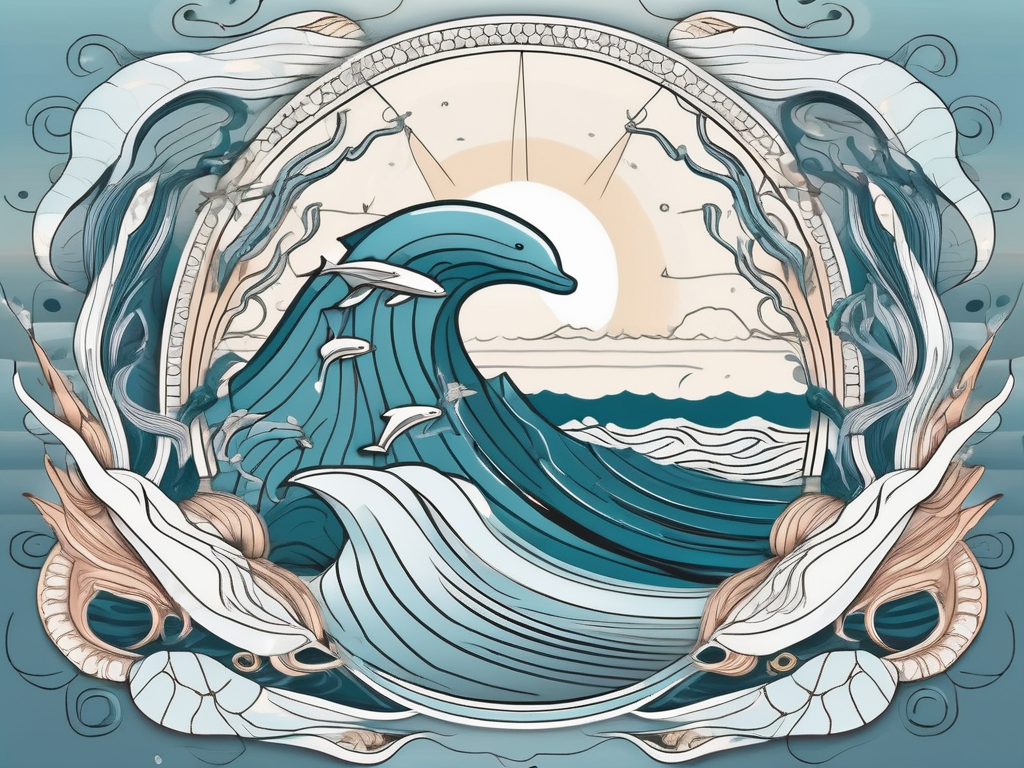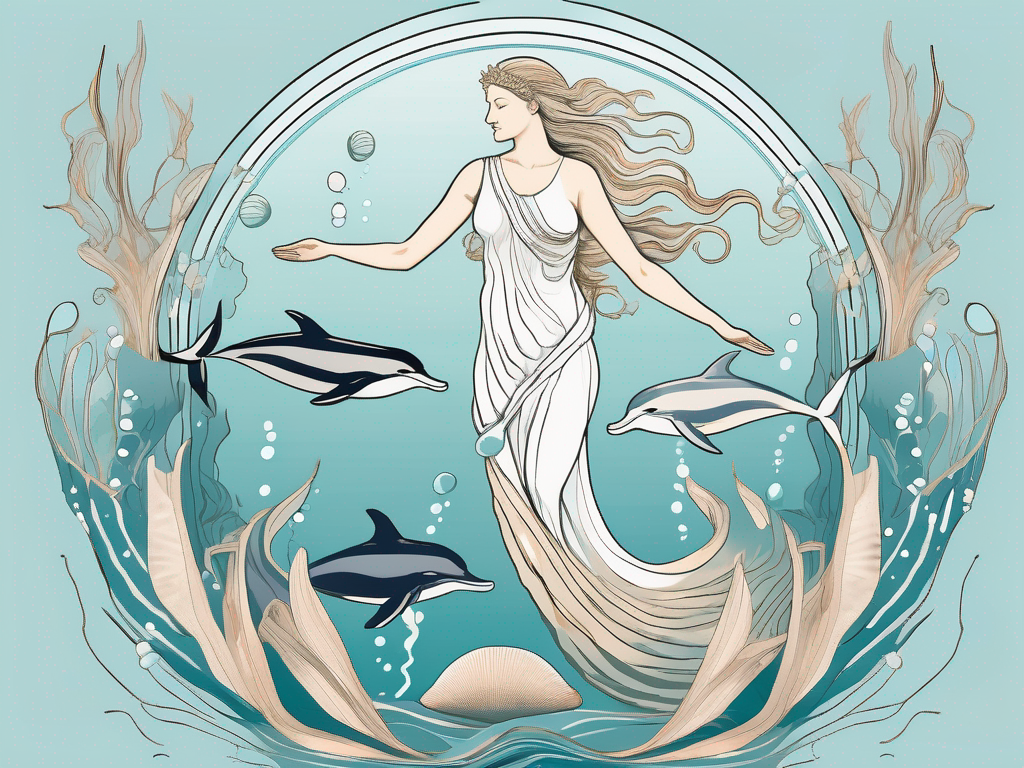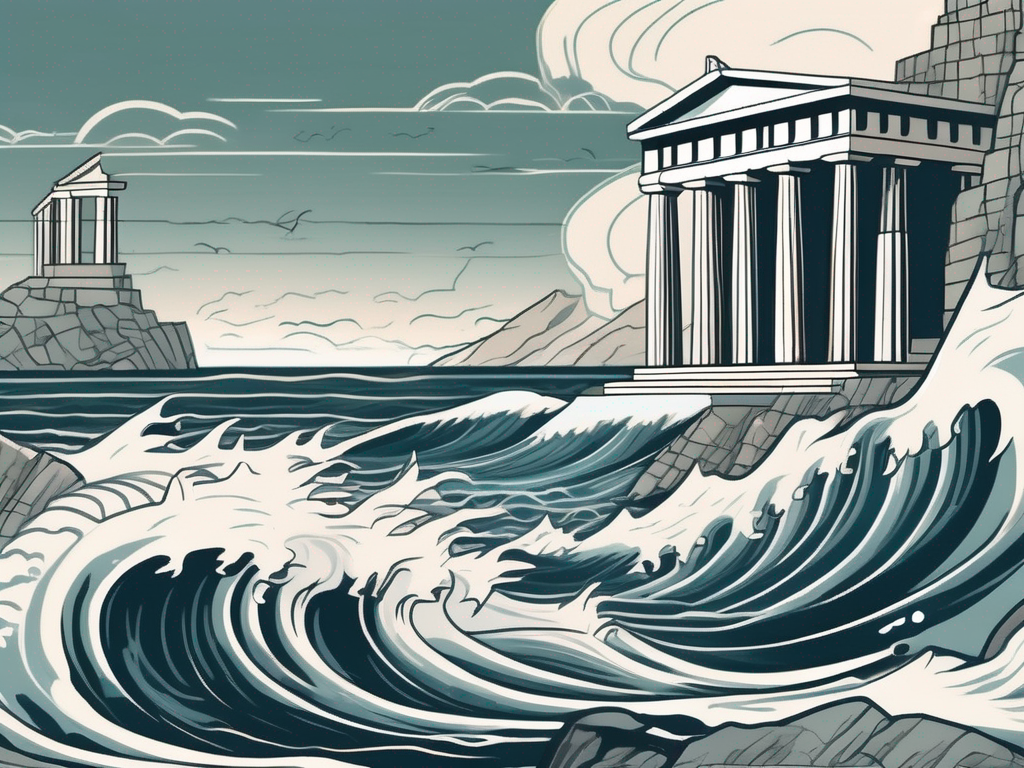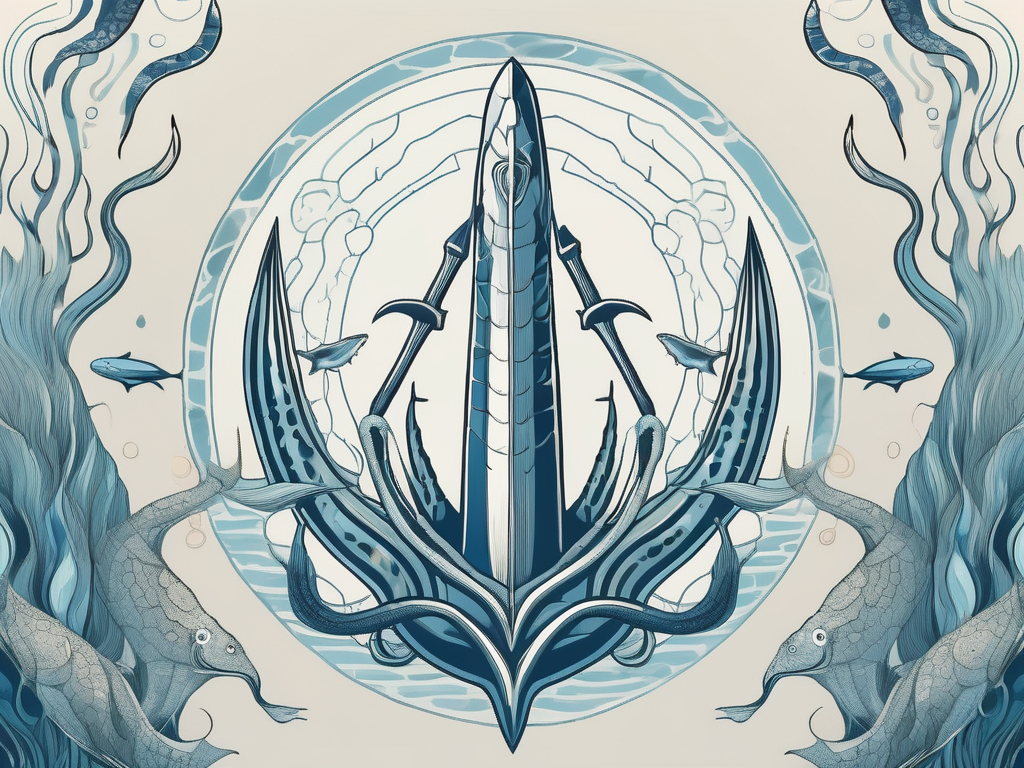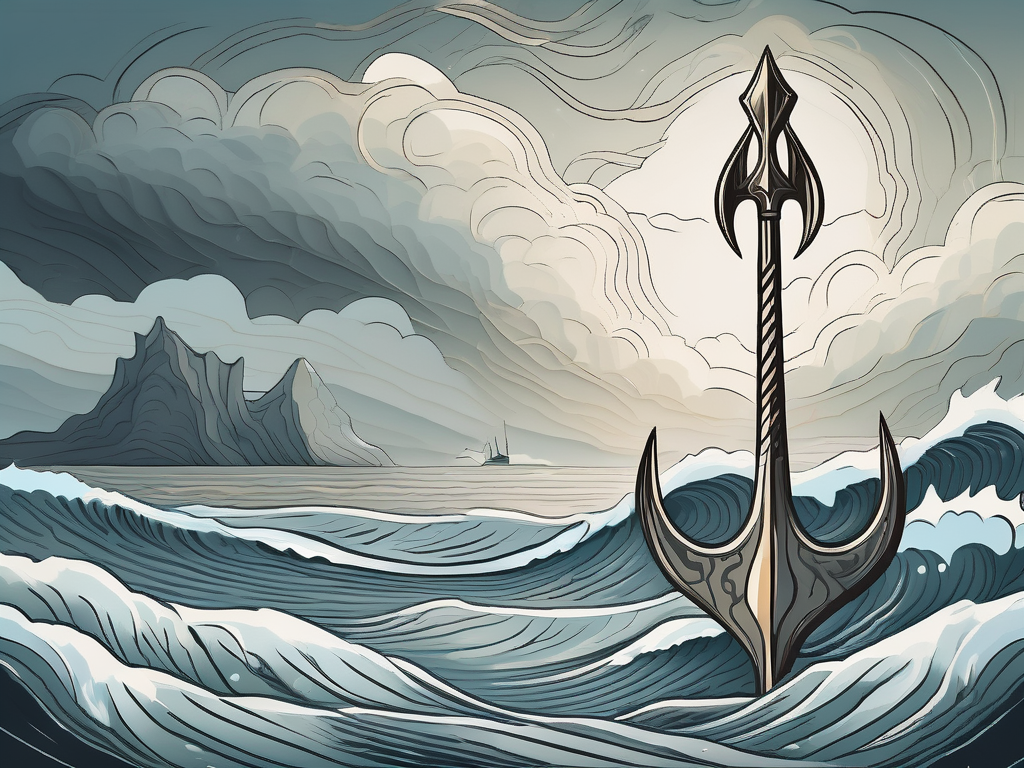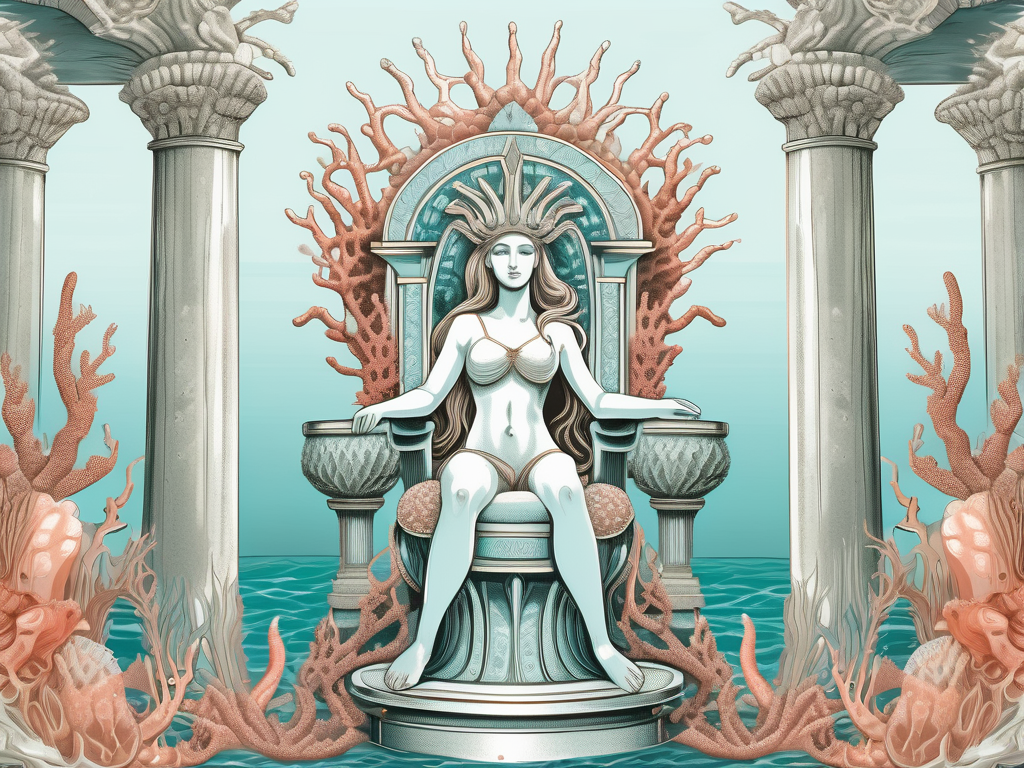Nereus, the Greek god of the sea, is a figure deeply rooted in ancient mythology. Let’s delve into the intriguing world of this enigmatic deity, discovering his role, powers, and fascinating legacy.
Understanding Nereus: An Overview
Before we delve into the depths of Nereus’ mythology, let’s take a moment to understand who he truly is. In Greek mythology, Nereus is often depicted as an old and wise god, who possesses great knowledge of the seas. His name translates to “the old man of the sea,” a fitting title for a deity with such ancient origins.
As a primordial deity, Nereus predates even the mighty Olympian gods. He is often referred to as the son of Pontus, the personification of the sea, and Gaia, the earth goddess. This connection to both the sea and the earth grants Nereus dominion over the depths of the ocean, making him a revered figure amongst both gods and mortals.
Nereus, with his vast knowledge and ancient wisdom, holds a significant role in Greek mythology. He embodies the essence of the sea and all its mysteries. As a god, he serves as an important intermediary between the underwater realm and the world above. Nereus possesses an unmatched knowledge of the sea’s depths, acting as a wise advisor and prophet to the gods.
While Nereus predominantly resides in his watery abode, he occasionally emerges to play an integral role in various myths. Many heroes seek his counsel and guidance, relying on his wisdom to navigate treacherous waters, both literally and metaphorically.
One of Nereus’ most notable appearances is in the tale of Jason and the Argonauts, where he aids the heroic crew on their quest for the Golden Fleece. Without Nereus’ guidance and prophetic powers, the journey would have surely ended in disaster.
As the god of the sea, Nereus possesses a range of powers and symbols associated with his watery domain. One of his most notable abilities is his shapeshifting prowess. Nereus can effortlessly transform his physical form to match that of various marine creatures, granting him unparalleled mobility and adaptability within the ocean.
Nereus is often depicted with a long, flowing beard, symbolizing his wisdom and age. Additionally, he is often seen holding a trident, a potent symbol of his authority over the sea. This iconic trident represents Nereus’ power to control the tides and unleash the forces of the ocean.
It is said that Nereus has the ability to calm the fiercest storms and bring tranquility to the turbulent waters. Sailors and seafarers often invoke his name and seek his protection before embarking on perilous voyages. Nereus’ presence brings a sense of security and assurance, knowing that the ancient god watches over them.
Legend has it that Nereus possesses the gift of prophecy, allowing him to see into the future and unravel the mysteries of the sea. His prophetic visions have guided countless individuals, from humble fishermen to mighty kings, helping them make crucial decisions and avoid impending disasters.
As the personification of the sea, Nereus is intimately connected to its inhabitants. He holds a deep reverence for the creatures that dwell within his watery realm, and he is known to protect them fiercely. Nereus is often depicted surrounded by a multitude of marine life, showcasing his harmonious relationship with the underwater world.
Throughout Greek mythology, Nereus remains a revered and respected figure, embodying the wisdom, power, and mystery of the sea. His influence extends beyond the realm of gods and mortals, shaping the very fabric of the ocean and its countless tales.
The Family of Nereus: Sea Deities in Greek Mythology
Within Greek mythology, Nereus’ family plays a significant role in shaping the sea’s mythology and the deities associated with it. Let’s explore the key members of Nereus’ divine lineage.
Nereus’ Marriage to Doris
Nereus is married to Doris, a sea nymph and daughter of Oceanus and Tethys. Together, Nereus and Doris give birth to a multitude of daughters known as the Nereids. These nymphs personify different aspects of the sea, bestowing them with unique attributes and powers.
Nereus and Doris’ union symbolizes the deep connection between the sea god and the vast expanse of water that stretches across the earth. Through their offspring, they extend their influence over various aspects of the ocean, including its waves, currents, and inhabitants.
The Nereids: Daughters of Nereus
The Nereids are a diverse group of fifty sea nymphs, each carrying their own distinctive traits. They range from Thetis, the mother of the mighty Achilles, to Galatea, the nymph loved by the Cyclops Polyphemus.
These ethereal creatures often accompany their father on his journeys, serving as his perennial companions. Whenever sailors catch glimpses of the Nereids dancing amidst the waves, it is believed to be a harbinger of safe passage and good fortune.
Nereus in Ancient Literature and Art
Throughout ancient Greek literature and art, Nereus’ presence can be felt, immortalized through various mediums. Let’s explore his representation in both realms.
Nereus’ Depictions in Greek Literature
In numerous myths and epic poems, Nereus makes his mark as a powerful and revered deity. He is often sought out by mortal heroes who require his knowledge and guidance. Writers such as Homer and Hesiod recount tales of Nereus’ wisdom and prophetic abilities, ensuring his legacy endures in the annals of Greek literature.
It is worth noting that while Nereus doesn’t hold a central role in many stories, his appearances are always significant. With his deep understanding of the sea, he contributes vital information to heroes on their quests and offers valuable insights into the workings of the divine realm.
Artistic Representations of Nereus
Nereus’ representation in ancient Greek art further solidifies his status as a revered deity. In sculptures and paintings, he is often depicted as an elderly and bearded figure, exuding an air of wisdom and ancient knowledge.
Artists highlight Nereus’ connection to the sea by surrounding him with various marine creatures, such as dolphins or sea nymphs. These depictions emphasize his role as the guardian and custodian of the ocean’s mysteries.
The Worship of Nereus in Ancient Greece
In ancient Greece, Nereus held a significant place in worship and religious rituals associated with the sea. Let’s explore the temples dedicated to Nereus and the influence he had on maritime culture.
Temples and Rituals Associated with Nereus
Temples dedicated to Nereus were not as prevalent as those of some other major gods. Instead, Nereus was predominantly worshipped through grand seaside ceremonies and offerings made in his honor. Sailors would pray to Nereus for safe voyages and abundant catches, seeking his divine protection during their voyages across the sea.
During these rituals, followers of Nereus would adorn their vessels with symbols representing the sea god, such as tridents or images of dolphins, paying homage to his influence and protection.
Nereus’ Influence on Maritime Culture
The worship of Nereus left an indelible mark on ancient Greek maritime culture. Sailors and fishermen held him in high regard, placing their trust in his watchful eye and benevolence. Nereus’ role extended beyond religious rites, as he became a symbol of hope and guidance in the vast and unpredictable realm of the sea.
Maritime festivals and competitions dedicated to Nereus were held to honor his influence on the well-being and prosperity of coastal communities. These celebrations brought people together, fostering a sense of unity and shared experiences tied to their reliance on the ocean’s bounty.
Nereus’ Legacy in Modern Culture
While Nereus may not be as widely known in modern times as some other Greek gods, his influence can still be felt in various aspects of contemporary culture. Let’s explore his impact on literature, film, and the enduring symbolism tied to his name.
Nereus in Contemporary Literature and Film
Contemporary authors and filmmakers often draw inspiration from Greek mythology, and Nereus occasionally makes appearances in their works. His wise and mysterious nature lends itself to storytelling, allowing writers to explore themes of knowledge, wisdom, and the depths of the human psyche.
In popular culture, Nereus’ name and symbolism continue to hold relevance. In films such as “Pirates of the Caribbean” and “Clash of the Titans,” Nereus is alluded to as a powerful sea deity, reinforcing his enduring legacy in the realms of entertainment and imagination.
The Symbolism of Nereus Today
Nereus’ symbolism extends beyond artistic endeavors and popular media. His representation as an ancient and wise guardian resonates with individuals seeking wisdom and guidance in their own lives. Nereus serves as a reminder that within the depths of uncertainty, there is wisdom to be found, nurturing our own journeys of self-discovery and growth.
Furthermore, Nereus’ connection to the sea and its vast mysteries compels us to contemplate the delicate balance between the natural world and our own existence. His legacy encourages us to foster a deep respect and reverence for the oceans that cover our planet, reminding us of their vital importance and the need to protect their fragile ecosystems.
In conclusion, Nereus, the ancient god of the sea, holds a significant place in Greek mythology and continues to captivate us with his wisdom and enduring symbolism. His stories, representations in art and literature, and influence on maritime culture unite to create a lasting legacy that reminds us of the timeless power and mysteries of the deep blue sea.
